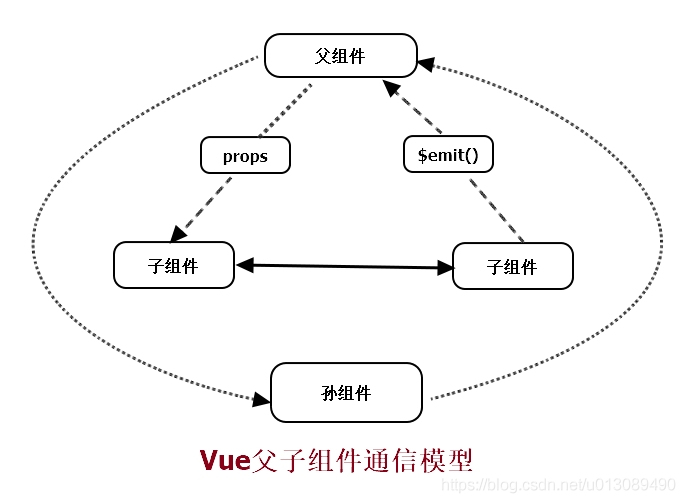
1、自定义事件
当子组件需要向父组件传递数据时,就要用到自定义事件。Vue的子组件用$emit()来触发事件,父组件用$on()来监听子组件的事件。父组件也可以直接在子组件的自定义标签上使用v-on来监听子组件触发的自定义事件。
使用要求:在子组件中通过$emit()把值传递给父组件,父组件使用v-on:xxx(或者使用语法糖@xxx);但是需要注意$emit()第一个参数是自定义事件的名称。
<div id="app">
<p>总数:{{total}} </p>
<my-component @increase=”handleGetTotal” @reduce= ”handleGetTotal”></my-component>
</div>
<script>
Vue.component('my-component' {
template:`\
<div >\
<button @cl 工ck= ” handle Increase” > + l </button > \
<button @click= ” handleReduce ” >- 1 < /button> \
</div> `,
data:function () {
return {
counter : 0
},
methods:{
handleincrease: function () {
this.counter++;
this.$emit ('increase', this.counter);
},
handleReduce: function () {
this.counter--;
this.$emit('reduce', this.counter);
}
});
var app =new Vue({
el :’ #app ’,
data: {
total: 0
}
methods : {
handleGetTotal: function (total) {
this.total = total ;
})
</script>2、使用v-model
在父组件上使用v-model指令,子组件使用this.$emit('input',this.子组件属性)

尽管Vue允许子组件去修改父组件数据,但在业务中,子组件应该尽量避免依赖父组件的数据,更不应该去主动修改它的数据,因为这样使得父子组件紧耦合,只看父组件,很难理解父组件的状态,因为它可能被任意组件修改,理想情况下,只有组件自己能修改它的状态。父子组件最好还是通过props和$emit来通信。